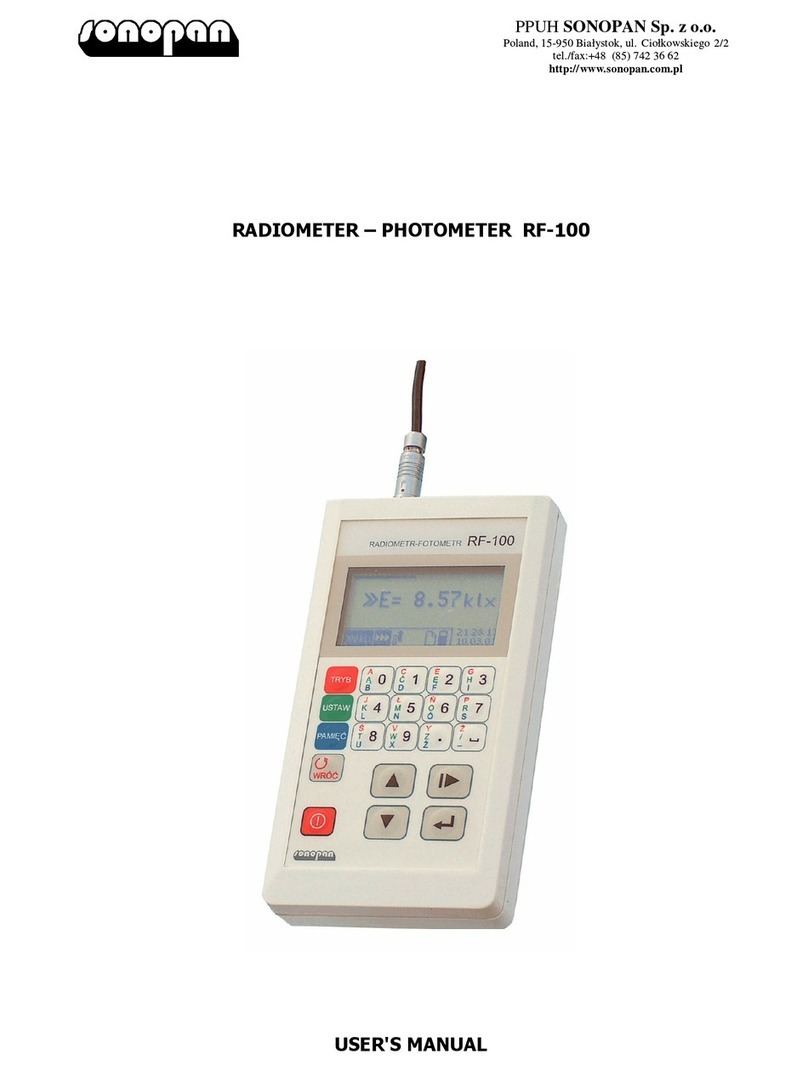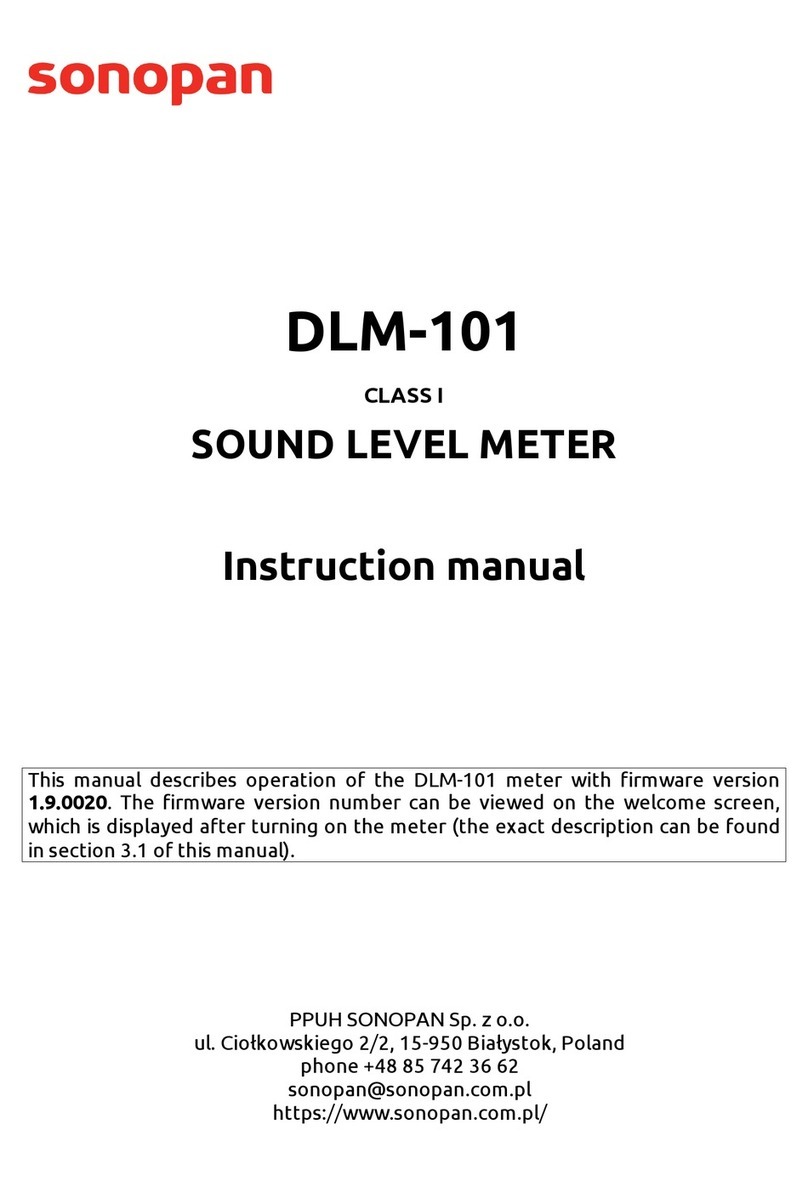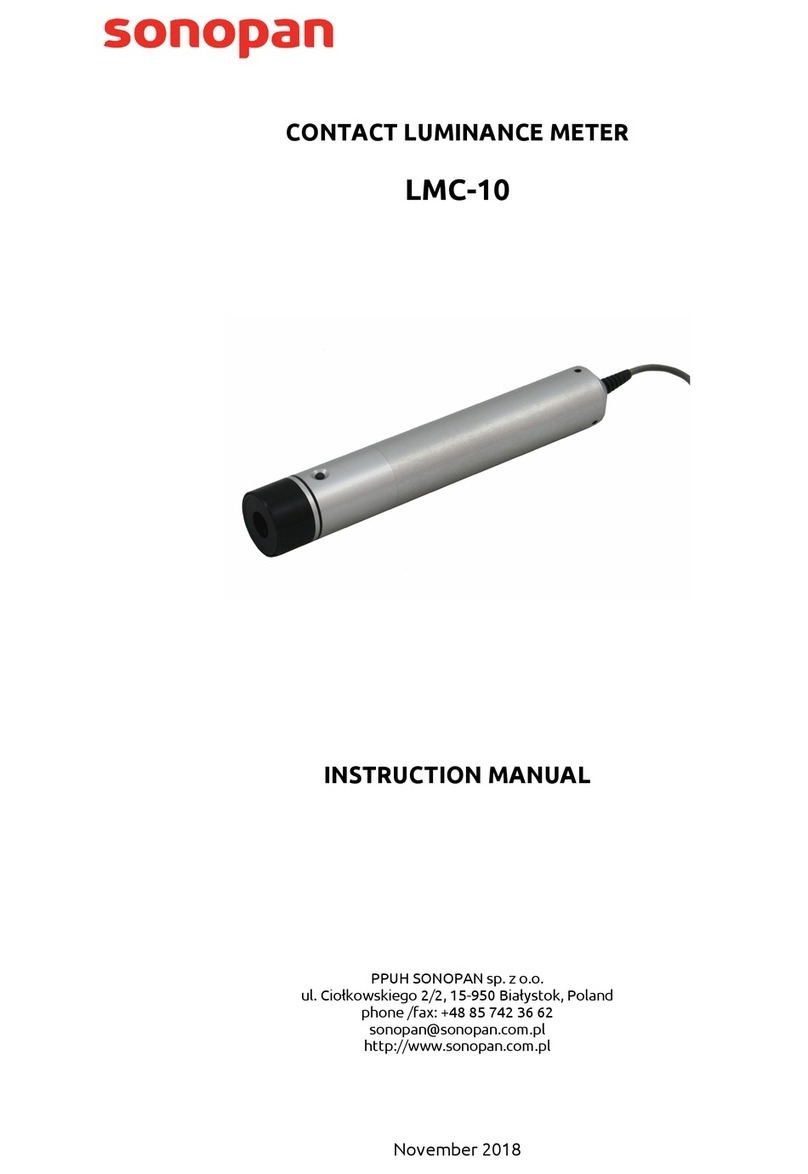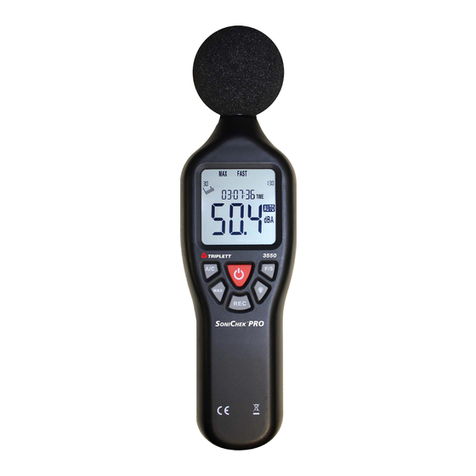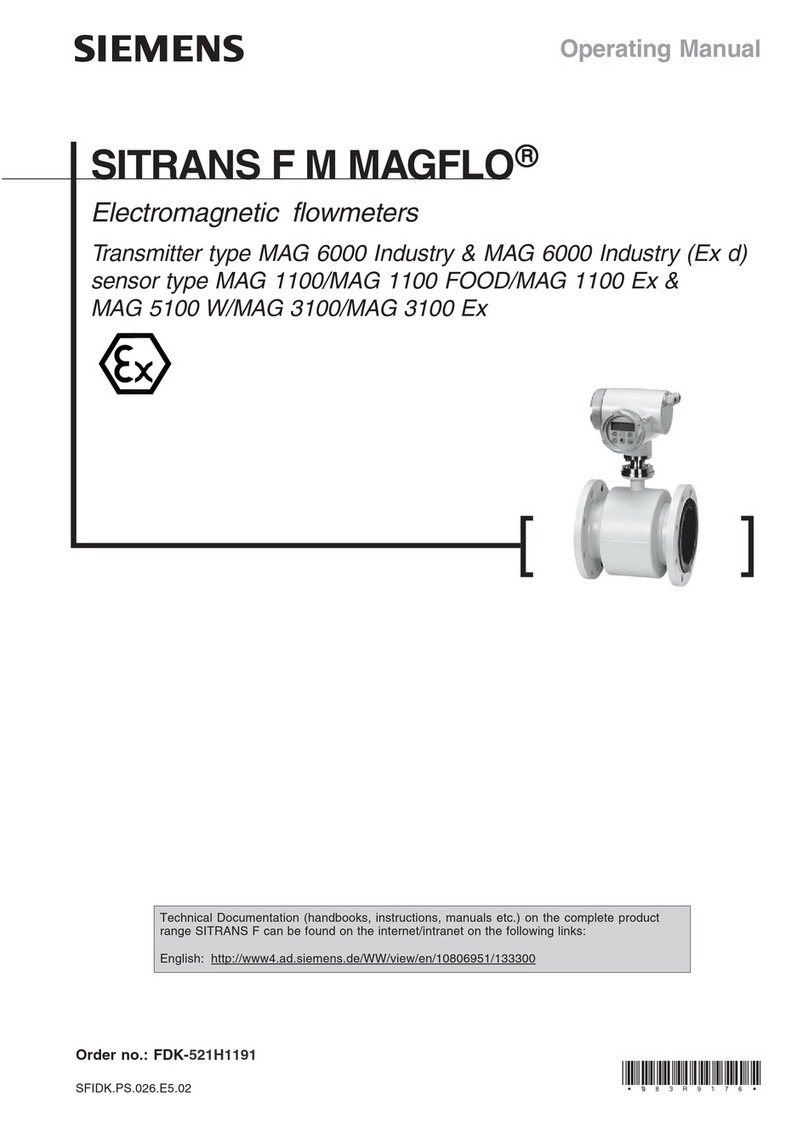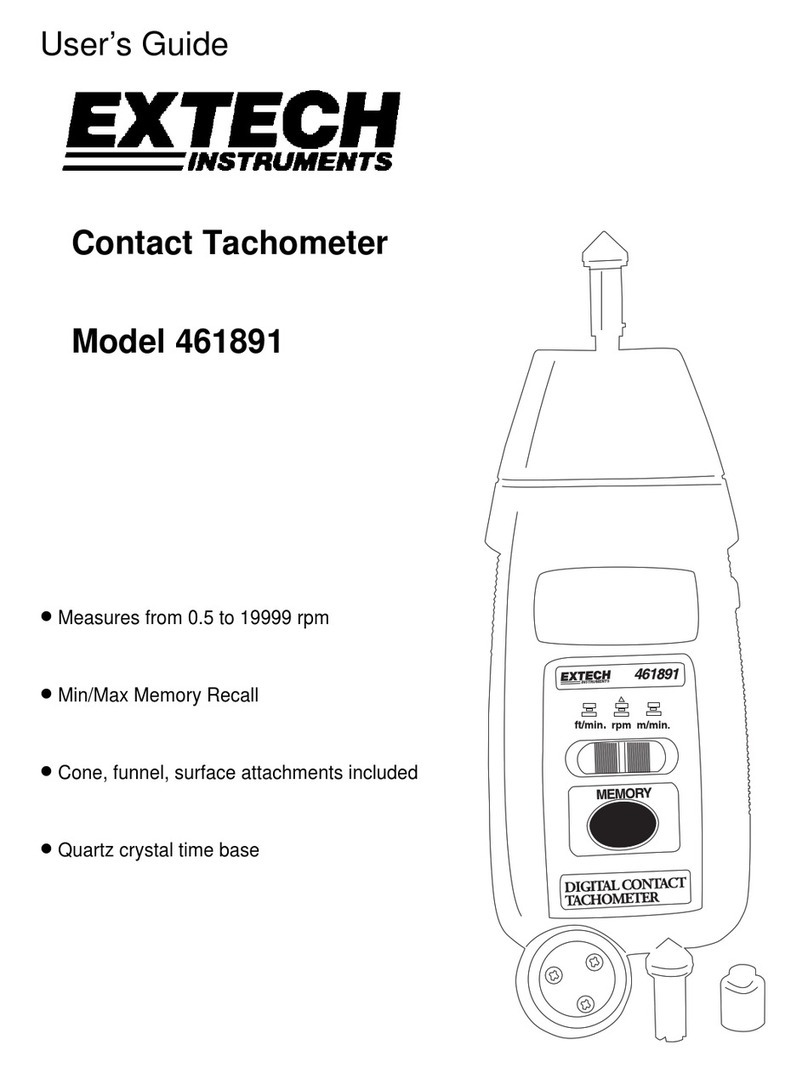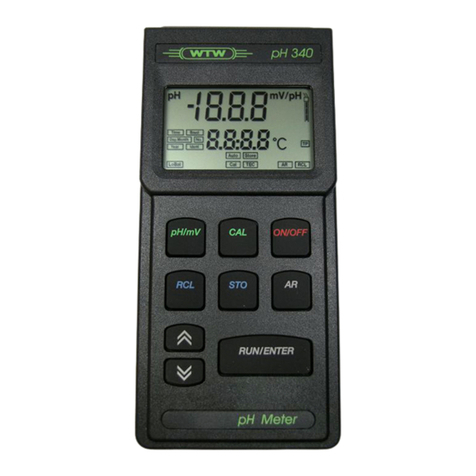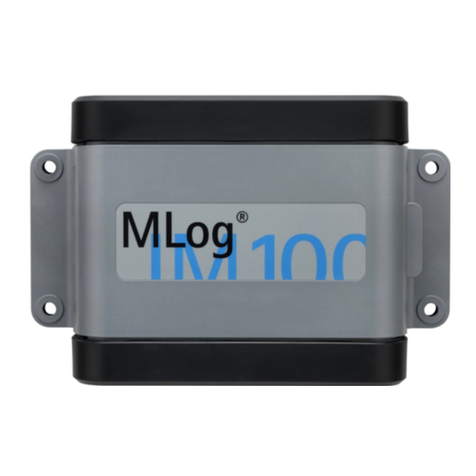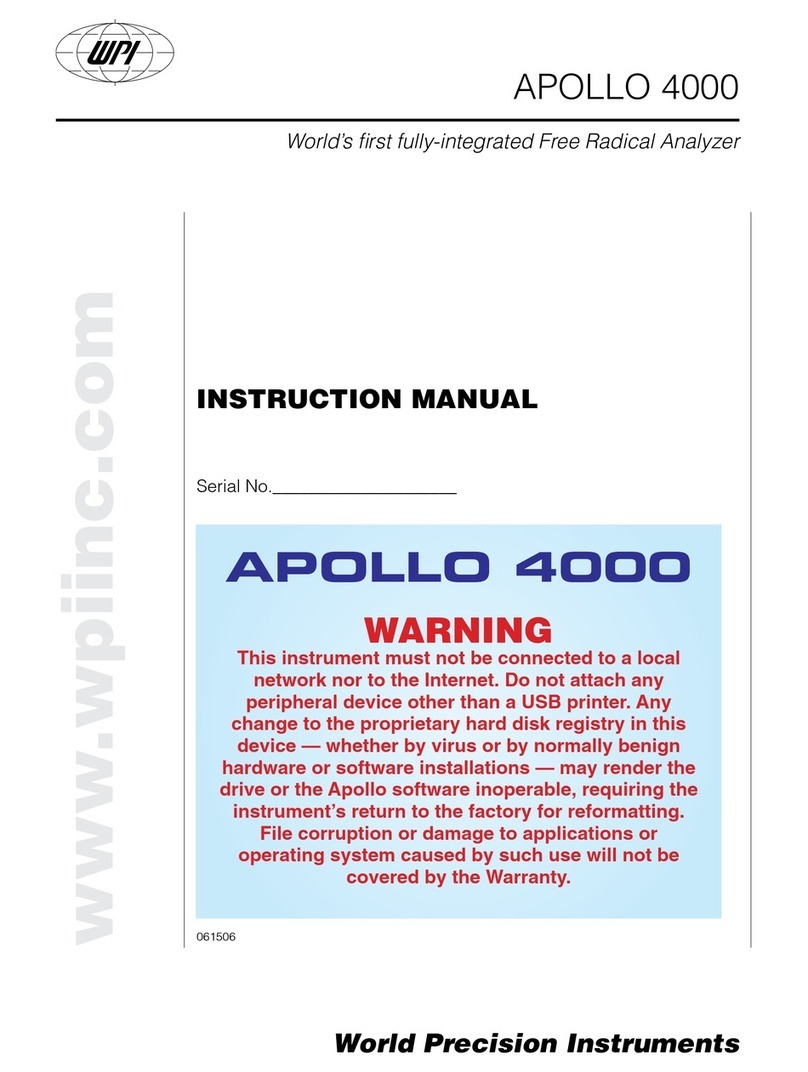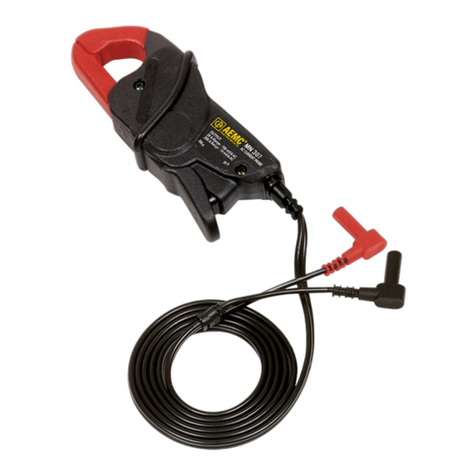SONOPAN DSA-50 User manual

January 2012
DIGITAL SOUND ANALYZER
DSA-50
Instruction Manual
P.P.U.H. "SONOPAN" sp. z o.o.
ul. Ciolkowskiego 2/2
PL-15950 Bialystok, Poland
Phone./fax +48 85 742 3662
http://www.sonopan.com.pl

2
C O N T E N T S
1. FEATURES OF THE INSTRUMENT........................................................................................4
1.1. Accessories...........................................................................................................................5
1.2. Weatherproof accessories set for microphone .......................................................................5
1.3. System configuration............................................................................................................6
1.4. Measured quantities..............................................................................................................7
1.4.1. Sound level meter (SLM) mode......................................................................................7
1.4.2. 1/1-octave analyzer mode...............................................................................................7
1.4.3. 1/3-octave analyzer mode...............................................................................................7
1.4.4. Infra G filter mode .........................................................................................................8
1.5. Specifications .......................................................................................................................8
1.5.1. Specifications for SLM mode.......................................................................................11
1.5.2. 1/1-octave analyzer mode.............................................................................................13
1.5.3. 1/3-octave analyzer mode.............................................................................................14
1.5.4. Infra G filter mode .......................................................................................................17
1.6. Influence of operating environment ....................................................................................17
1.7. Influence of instrument accessories.....................................................................................18
2. CONTROLLING OF THE INSTRUMENT..............................................................................21
2.1. Control keys .......................................................................................................................21
2.2. Input and output connectors of the instrument.....................................................................21
2.3. Default instrument settings .................................................................................................23
2.4. Preparation of the instrument to operation...........................................................................23
3. OPERATION............................................................................................................................24
3.1. Instrument data plate ..........................................................................................................24
3.2. SETUP menu......................................................................................................................24
3.3. RESULTS menu.................................................................................................................26
3.3.1. SLM mode ...................................................................................................................26
3.3.2. 1/1-octave analyzer ......................................................................................................28
3.3.3. 1/3-octave analyzer mode.............................................................................................29
3.3.4. Infra G filter mode .......................................................................................................29
3.4. SETUP TIME menu ...........................................................................................................30
3.5. FILTER menu ....................................................................................................................31
3.6. MEMORY menu ................................................................................................................31
3.6.1. Save measure ...............................................................................................................32
3.6.2. Load measure...............................................................................................................32
3.6.3. Measurement history....................................................................................................33
3.6.4. FREE/OCCUPIED menu .............................................................................................36
3.7. CLEAR menu.....................................................................................................................36
3.7.1. Measure in memory .....................................................................................................36
3.7.2. Measurement history....................................................................................................37
3.7.3. Entire memory .............................................................................................................37
4. COMMUNICATION WITH COMPUTER...............................................................................37
5. RECOMENDATIONS FOR INSTRUMENT USE ...................................................................38
5.1. Recommendations for correct performing of measurements................................................38
5.2. Internal battery ...................................................................................................................38
5.3. Calibration of the instrument ..............................................................................................38
5.4. Warranty ............................................................................................................................39
5.4.1. Complaint instructions for the purchaser: .....................................................................39
5.5. Maintenance and repair.......................................................................................................40
6. CE MARKING AND CONFORMANCE TO EU COUNCIL DIRECTIVES............................40

3
Appendix A. Filter characteristics................................................................................................41
Appendix B. Directional responses..............................................................................................45
Appendix C. Sensitivity to vibration............................................................................................48

4
1. FEATURES OF THE INSTRUMENT
Digital sound analyzer model DSA-50 is the instrument combining the features of integrating
sound level meter as well as 1/1- and 1/3-octave band frequency analyzer.
The majority of quantities characterizing occupational, environmental and other kinds of
acoustic noise can be measured by this Class 1 digital-signal-processing instrument.
DSA-50 is designed to be capable to perform long-lasting measurements without need of
battery recharging. Internal battery allows for at least 24h continuous operation of the instrument
provided microphone heating is turned off. External battery or mains adaptor may be also used.
The instrument is equipped with USB 1.1 interface to enable bi-directional communication with
PC.
Fig. 1.1. DSA-50 digital sound analyzer – general view.

5
1.1. Accessories
Basic accessories:
• Model 5014 external power supply (Mascot).
• Instruction Manual.
• Declaration of Conformity.
• Warranty Card.
• Certificate of Verification.
• OP 60/2 microphone windscreen.
• Carrying case.
• 1.8 m USB interface cable.
• DSA-50 computer software for instrument remote operation (PC under MS Windows
98SE/ME/2000/XP required).
• DSA Monitor computer software for data display, readout and analysis (PC under
MS Windows 98SE/ME/2000/XP required).
Additional accessories:
• Built-in microphone heating system.
• Watertight carrying case.
• KA-50 sound calibrator.
• CV-06 external supply source together with 8614 power supply (Mascot).
• Weatherproof accessories set for microphone.
• Microphone extension cable PD5Lx (x stands for cable length, max. 6 m).
• Microphone extension cable PD7Lx (x stands for cable length, max. 6 m).
• Supporting stand for microphone: SM2 (2 m height) and SM4 (4 m height).
• Supporting stand for the instrument: SMR (1.5 m height).
1.2. Weatherproof accessories set for microphone
This set enables to convert WK-21 microphone into WK-21WP weatherproof microphone. It
consists of:
• weatherproof version of microphone protecting grid, model SM,
• rain cover, model OK,
• windscreen with anti-bird spikes, model TOP,
• microphone holder.
To assemble weatherproof microphone proceed as follows:
• Fasten the part (2) of microphone holder to microphone extension cable PD7Lx and next
connect this cable to microphone-preamplifier assembly (1) (see Fig. 1.2).
• Put part (3) of microphone holder on microphone-preamplifier assembly (1) and then
screw it to part (2) of microphone holder fastened earlier to extension cable (see Fig. 1.2).
• Remove standard protecting grid (4) from WK-21 (see Fig. 1.3).
WARNING! During this and next action particular care should be observed as the
microphone diaphragm is exposed after protection grid removing and may be easily
damaged!
• Screw SM weatherproof protecting grid (5) to the microphone (see Fig. 1.4).
• Put OK rain cover (6) on the microphone (see Fig. 1.4).
• Put TOP windscreen with anti-bird spikes (7) on the microphone assembled as above
(see Fig. 1.5) until the windscreen reaches microphone holder.
• Fig. 1.6 shows completely assembled weatherproof microphone WK-21WP.

6
2
1 3
Fig. 1.2. Assembling of weatherproof accessories – step 1.
1
4
Fig. 1.3. Assembling of weatherproof accessories – step 2.
5
6
Fig. 1.4. Assembling of weatherproof accessories – step 3.
7
Fig. 1.5. Assembling of weatherproof accessories – step 4.
Fig. 1.6. Completely assembled weatherproof microphone WK-21WP.
1.3. System configuration
Basic configuration:
• DSA-50 digital sound analyzer (manufacturer: SONOPAN).
• PW21LG ½” microphone preamplifier (manufacturer: SONOPAN).

7
• WK-21 ½” measurement microphone (manufacturer: SONOPAN).
Other accessories specified in chapter 1.1 are optional.
1.4. Measured quantities
Many quantities used to characterize acoustic noise can be measured simultaneously using
DSA-50 digital sound analyzer. The set of measured quantities depends on instrument operating
mode. Measurement duration and battery condition information is displayed at every operating
mode.
1.4.1. Sound level meter (SLM) mode
For two frequency weightings, selected among from three ones: A, C and Z available in the
instrument, following quantities can be measured simultaneously (in symbols listed below X stands
for selected frequency weighting):
• LXF current RMS, F-time-weighted sound level,
• LXFmn minimum RMS, F-time-weighted sound level,
• LXFmx maximum RMS, F-time-weighted sound level,
• LXS current RMS, S-time-weighted sound level,
• LXSmn minimum RMS, S-time-weighted sound level,
• LXSmx maximum RMS, S-time-weighted sound level,
• LXI current RMS, I-time-weighted sound level,
• LXImn minimum RMS, I-time-weighted sound level,
• LXImx maximum RMS, I-time-weighted sound level,
• LXPk current peak sound level,
• LXMPk maximum peak sound level,
• LXeq time-average (equivalent continuous) sound level,
• LXeq1s time-average sound level for last one second.
If A frequency weighting is one of two selected weightings, then following quantities are
measured additionally for this weighting:
• LAE sound exposure level,
• LAEX,T noise exposure level referred to specified exposure time T.
1.4.2. 1/1-octave analyzer mode
1/1-octave analyzer contains nine digital octave-band filters having exact centre frequencies
specified for binary octave ratio. Nominal centre frequencies are 31.5Hz, 63Hz, 125Hz, 250Hz,
500Hz, 1kHz, 2kHz, 4kHz and 8kHz. Specifications of filters conform to Class 1 requirements of
EN 61260:1995 and EN 61260:1995/A1:2001.
Following quantities can be measured simultaneously for each filter centre frequency (and also
for wide-band response), when one frequency weighting is selected among from three available
weightings (A, C and Z):
• LFcurrent RMS, F-time-weighted sound level,
• LS current RMS, S-time-weighted sound level,
• Leq time-average sound level.
If A frequency weighting is selected, then following quantities are measured additionally:
• LASmx maximum RMS, A-frequency-weighted, S-time-weighted sound level,
• LAeq time-average A-frequency-weighted sound level,
• LCMPk maximum peak C sound level.
1.4.3. 1/3-octave analyzer mode
1/3-octave analyzer contains twenty nine digital 1/3-octave band filters having exact centre
frequencies specified for binary octave ratio. Nominal centre frequencies are 25Hz, 31.5Hz, 40Hz,
50Hz, 63Hz, 80Hz, 100Hz, 125Hz, 160Hz, 200Hz, 250Hz, 315Hz, 400Hz, 500Hz, 630Hz, 800Hz,

8
1kHz, 1.25kHz, 1.6kHz, 2kHz, 2.5kHz, 3.15kHz, 4kHz, 5kHz, 6.3kHz, 8kHz, 10kHz, 12.5kHz and
16kHz. Specifications of filters conform to Class 1 requirements of EN 61260:1995 and EN
61260:1995/A1:2001.
Following quantities can be measured simultaneously for each filter centre frequency (and also
for wide-band response), when one frequency weighting is selected among from three available
weightings (A, C and Z) and when one time weighting is selected among from two available
weightings (F and S):
• L current RMS sound level,
• Leq time-average sound level.
1.4.4. Infra G filter mode
Following quantities can be measured simultaneously:
• LGS current RMS, G-frequency-weighted S-time-weighted sound level,
• LGSmn minimum RMS, G-frequency-weighted S-time-weighted sound level,
• LGSmx maximum RMS, G-frequency-weighted S-time-weighted sound level,
• LIPk current peak sound level in infrasound band,
• LIMPk maximum peak sound level in infrasound band,
• LGeq G-frequency-weighted time-average sound level.
1.5. Specifications
DSA-50 digital sound analyzer conforms to requirements of following standards:
EN 61672-1:2002 Electroacoustics – Sound level meters – Part 1:
Specifications.
EN 61260:1995/A1:2001 Electroacoustics – Octave-band and fractional-octave-
band filters.
ISO 7196:1995 Acoustics – Frequency-weighting characteristic for
infrasound measurements.
DSA-50 conforms to electromagnetic compatibility (EMC) requirements specified in
EN 61672-1:2002 for X group instruments.
Specifications common for all operating modes:
• Accuracy class 1
• Readout resolution 0.1dB
• Maximum sound pressure level can be applied
without causing damage to the instrument 150dB (3% THD)
• Maximum electrical voltage can be applied at
instrument electrical input facility without causing
damage to the instrument 22Vp-p
• Capacitance of electrical input facility 18pF
• Reference conditions:
- type of sound field free field
- reference frequency 1000Hz
- reference sound pressure level 94dB
- reference level range:
for SLM mode 55 – 135dB
for 1/1- and 1/3-octave analyzer mode 65 – 135dB
for infra G filter mode 65 – 145dB
- sampling frequency:
for SLM, 1/1- octave and 1/3-octave mode 52.1kHz
for infra G filter mode 17.4kHz

9
- Microphone reference direction microphone symmetry axis
- microphone reference point microphone diaphragm centre
- reference orientation sound wave arriving from reference
direction
- reference temperature +23°C
- reference humidity 50% RH
- reference static pressure 101.325kPa
• Permissible error for sinusoidal reference signal
(progressive sound wave incident perpendicularly
to microphone diaphragm, 94dB, 1000Hz) ≤±0.7dB
• Operating temperature range -10 ÷+50°C
• Storage temperature range -10 ÷+50 °C
• Operating humidity range ≤90% RH (no condensation)
• Operating static pressure range 65 ÷108kPa
• Electromagnetic emission within the limits specified in
EN 61672-1:2002 (maximum
emission when operating with
external power supply)
• Warm-up time:
- after turn-on 1 minute
- after environmental conditions change 15 minutes
• Measurement duration 99h 59m 58s (set with 1s resolution)
or infinite
• Serial communication interface USB 1.1
• Dimensions (without microphone) 237 x 84 x 50 mm
• Power supply
- internal battery NiMH 6V 2.1Ah
- external power supply Mascot 5014 (9V, 350mA)
• Minimum operating voltage of internal battery 5.5V
• Continuous operating time (battery fully charged,
microphone heating turned off) 24h
• Weight 600g
• Nominal corrections for effects of reflection
from instrument case (free field, 0° incidence) See table below
f [Hz]
250 315 400 500 630 800 1000 1250 1600 2000 2240
dL [dB]
0,23 -0,22 0,41 -0,08 -0,30 -0,29 -0,30 0,30 -0,17 -0,44 -0,11
U [dB]
≤0,03 ≤0,05
f [Hz]
2500 2800 3150 3550 4000 4500 5000 5600 6300 7100 8000
dL [dB]
-0,09 0,12 -0,17 -0,51 0,04 0,00 -0,44 -0,29
0,19 0,16 0,51
U [dB]
≤0,05
f [Hz]
8500 9000 9500 10000
10600
11200
11800
12500
13200
14000
15000
dL [dB]
-0,33 0,25 -0,33 -0,52 0,08 -0,18 -0,05 0,19 -0,12 -0,43 -0,53
U [dB]
≤0,05 ≤0,09
f [Hz]
16000
17000
18000
19000
20000
dL [dB]
0,03 0,63 0,60 -0,97 -1,50
U [dB]
≤0,09
• Differences between WK-21 microphone free field
frequency response at 0° incidence and electrostatic

10
actuator response; expanded (k=2) uncertainty of
the determination of these differences See table below and Fig. 1.7
f [Hz]
250 315 400 500 630 800 1000 1250 1600 2000 2240
dL [dB]
0,00 0,02 0,03 0,04 0,05 0,08 0,11 0,18 0,26 0,36 0,43
U [dB]
≤0,29
f [Hz]
2500 2800 3150 3550 4000 4500 5000 5600 6300 7100 8000
dL [dB]
0,52 0,62 0,74 0,93 1,13 1,42 1,70 2,08 2,50 2,89 3,30
U [dB]
≤0,29 ≤0,39
f [Hz]
8500 9000 9500 10000
10600
11200
11800
12500
13200
14000
15000
dL [dB]
3,49 3,69 3,90 4,18 4,49 4,82 5,19 5,72 6,34 6,83 7,31
U [dB]
≤0,39 ≤0,48
f [Hz]
16000
17000
18000
19000
20000
dL [dB]
7,67 8,09 8,47 8,77 9,12
U [dB]
≤0,48
0,00
1,00
2,00
3,00
4,00
5,00
6,00
7,00
8,00
9,00
10,00
100 1000 10000 100000
f[Hz]
dL[dB]
Fig. 1.7. Free-field correction for WK-21 microphone (0° incidence).
Table below and Fig. 1.8 show typical free-field frequency response of WK-21 microphone
(relative to its sensitivity at 250Hz) together with maximum permissible deviations as specified in
EN 61094-4:1995.
f [Hz]
250 315 400 500 630 800 1000 1250 1600 2000 2240
dL [dB]
0,00 -0,07 -0,02 0,00 0,02 -0,05 0,02 -0,01 -0,08 0,04 -0,02
U [dB]
≤0,21
f [Hz]
2500 2800 3150 3550 4000 4500 5000 5600 6300 7100 8000
dL [dB]
0,07 0,06 -0,15 0,06 -0,13 0,11 -0,05 -0,05 0,20 0,31 0,38
U [dB]
≤0,21 ≤0,34

11
f [Hz]
8500 9000 9500 10000
10600
11200
11800
12500
13200
14000
15000
dL [dB]
-0,46 0,03 -0,50 -0,66 -0,23 -0,42 -0,83 -0,33 -0,20 -0,21 0,08
U [dB]
≤0,34 ≤0,44
f [Hz]
16000
17000
18000
19000
20000
dL [dB]
0,02 -0,09 -0,08 -0,21 -0,46
U [dB]
≤0,44
-2,50
-2,00
-1,50
-1,00
-0,50
0,00
0,50
1,00
1,50
2,00
2,50
100 1000 10000 100000
f[Hz]
L[dB]
Fig. 1.8. Typical free-field frequency response of WK-21 microphone.
1.5.1. Specifications for SLM mode
• Frequency weightings A, C, Z
• AC electrical output (sine, 1000 Hz)
- weighted frequency response A, Z
- FSD output voltage for level range 14Vp-p
- maximum output voltage 22Vp-p
- output impedance 1kΩ
- load impedance ≥10kΩ
• Time weightings SLOW, FAST, IMPULSE
• Starting level for level linearity testing reference sound pressure level at
reference level range
• Maximum unweighted sound pressure level
not activating overload indication See table below
Level range
Peak level (sine) RMS level (sine)
15 – 95dB 118dB 95dB
35 – 115dB
128dB 115dB
55 – 135dB
138dB 135dB

12
• Total range for LAsound level and LAeq
time-average sound level 18 – 135dBA
• Total range for LCPk peak sound level 40 – 138dBC
• Extents of measurement range at specified signal frequency, level range and frequency
weighting:
- for sound level (L) and time-average sound level (Leq)
31.5Hz
Level range A C Z
15 – 95dB 18 – 58.2dB 25 – 95.2dB 29 – 95dB
35 – 115dB 35 – 78.3dB 35 – 115.2dB 35 – 115dB
55 – 135dB 55 – 95.6dB 55 – 132.5dB 55 – 135dB
1kHz
Level range A C Z
15 – 95dB 18 – 95dB 25 – 95dB 29 – 95dB
35 – 115dB 35 – 115dB 35 – 115dB 35 – 115dB
55 – 135dB 55 – 135dB 55 – 135dB 55 – 135dB
4kHz
Level range A C Z
15 – 95dB 18 – 95dB 25 – 93.2dB 29 – 95dB
35– 115dB 35 – 115dB 35 – 113.2dB 35 – 115dB
55 – 135dB 55 – 135dB 55 – 133.2dB 55 – 135dB
8kHz
Level range A C Z
15 – 95dB 18 – 95dB 25 – 93.1dB 29 – 95dB
35 – 115dB 35 – 115dB 35 – 113.1dB 35 – 115dB
55 – 135dB 55 – 135dB 55 – 133.2dB 55 – 135dB
12.5kHz
Level range A C Z
15 – 95dB 18 – 95dB 25 – 92.8dB 29 – 95dB
35 – 115dB 35 – 115dB 35 – 112.8dB 35 – 115dB
55 – 135dB 55 – 131.4dB 55 – 129.1dB 55 – 135dB
- for peak level (LPk)
Level range A C Z
15 – 95dB 46 – 98dB 40 – 97dB 61 – 98dB
35 – 115dB 60 – 118dB 50 – 117dB 70 – 118dB
55 – 135dB 73 – 138dB 65 – 137dB 82 – 138dB
WARNING! The extents of measurement range for peak level at A and Z frequency
weightings are determined for continuous 1000Hz sine signal; measurement error extended
by expanded measurement uncertainty is less than 1.1 dB.
• Self-generated noise
- measured with electrical input facility installed:
at A frequency weighting ≤13dB
at C frequency weighting ≤19dB
at Z frequency weighting ≤25dB

13
- measured with WK-21 microphone installed:
at A frequency weighting ≤19dB
at C frequency weighting ≤24dB
at Z frequency weighting ≤27dB
1.5.2. 1/1-octave analyzer mode
• Frequency weightings A, C, Z
• AC electrical output (sine, 1000 Hz)
- weighted frequency response A, Z
- FSD output voltage for level range 14Vp-p
- maximum output voltage 22Vp-p
- output impedance 1kΩ
- load impedance ≥10kΩ
• Time weightings SLOW, FAST
• Extents of measurement range at specified level range and frequency weighting, for time-
weighted sound level L and time-average sound level Leq (analyzer):
Level range A C Z
5 – 75dB See table below
25 – 95dB 25 – 95dB 25– 95dB 25 – 95dB
45 – 115dB 45 – 115dB 45– 115dB 45 – 115dB
65 – 135dB 65 – 135dB 65 – 135dB 65 – 135dB
• Extents of measurement range at specified octave bands and at most-sensitive level range
(5 – 75dB), for time-weighted sound level L and time-average sound level Leq (analyzer):
Frequency A C Z
31.5Hz 5 – 38.4dB 23 – 72.1dB 29 – 75dB
63Hz 5 – 49.4dB 22 – 74.3dB 26 – 75dB
125Hz 6 – 58.9dB 19 – 74.9dB 20 – 75dB
250Hz 6 – 66.4dB 19 – 75dB 16 – 75dB
500Hz 10 – 71.8dB 19 – 75dB 12 – 75dB
1kHz 10 – 75dB 19 – 75dB 12 – 75dB
2kHz 10 – 75dB 19 – 74.9dB 10 – 75dB
4kHz 9 – 75dB 19 – 74.2dB 12 – 75dB
8kHz 9 – 75dB 19 – 72.1dB 13 – 75dB
• Extent of measurement range for LASmx maximum sound level and LAeq time-average sound
level (criterion values 17 – 135dB
• Extents of measurement range for LCPk peak sound level (criterion values)
Level range C
5 – 75dB 45 – 77dB
25 – 95dB 40 – 97dB
45 – 115dB 55 – 117dB
65 – 135dB 75 – 137dB
• Self-generated noise
- measured with electrical input facility installed

14
Frequency A C Z
31.5Hz not measurable ≤9.0dB ≤14.0dB
63Hz not measurable ≤8.0dB ≤9.0dB
125Hz not measurable ≤6.0dB ≤6.0dB
250Hz not measurable ≤4.0dB ≤4.0dB
500Hz not measurable ≤3.0dB ≤3.0dB
1kHz ≤2.0dB ≤2.0dB ≤2.0dB
2kHz ≤3.0dB ≤2.0dB ≤2.0dB
4kHz ≤4.0dB ≤2.0dB ≤3.0dB
8kHz ≤4.0dB ≤2.0dB ≤5.0dB
power sum of
all octave bands
≤7.0dB ≤11.0dB ≤14.0dB
- measured with WK-21 microphone installed
Frequency A C Z
31,5Hz not measurable ≤19.0dB ≤22.0dB
63Hz not measurable ≤17.0dB ≤19.0dB
125Hz not measurable ≤15.0dB ≤16.0dB
250Hz ≤5.0dB ≤13.0dB ≤13.0dB
500Hz ≤8.0dB ≤11.0dB ≤12.0dB
1kHz ≤11.0dB ≤11.0dB ≤11.0dB
2kHz ≤13.0dB ≤11.0dB ≤12.0dB
4kHz ≤14.0dB ≤12.0dB ≤13.0dB
8kHz ≤13.0dB ≤11.0dB ≤14.0dB
power sum of
all octave bands
≤16.0dB ≤20.0dB ≤22.0dB
1.5.3. 1/3-octave analyzer mode
• Frequency weightings A, C, Z
• AC electrical output (sine, 1000 Hz)
- weighted frequency response A, Z
- FSD output voltage for level range 14Vp-p
- maximum output voltage 22Vp-p
- output impedance 1kΩ
- load impedance ≥10kΩ
• Time weightings SLOW, FAST
• Extents of measurement range at specified level range and frequency weighting, for time-
weighted sound level L and time-average sound level Leq
Level range A C Z
5 – 75dB See table below
25 – 95dB 25 – 95dB 25 – 95dB 25 – 95dB
45 – 115dB 45 – 115dB 45 – 115dB 45 – 115dB
65 – 135dB 65 – 135dB 65 – 135dB 65 – 135dB
• Extents of measurement range at specified octave bands and at most-sensitive level range
(5 – 75 dB), for time-weighted sound level L and time-average sound level Leq

15
Frequency A C Z
25Hz 9 – 60.3dB 21 – 75dB 29 – 75dB
31.5Hz 9 – 65.6dB 21 – 75dB 28 – 75dB
40Hz 9 – 70.4dB 23 – 75dB 24 – 75dB
50Hz 9 – 74.8dB 23 – 75dB 23 – 75dB
63Hz 9 – 75dB 23 – 75dB 21 – 75dB
80Hz 9 – 75dB 23 – 75dB 21 – 75dB
100Hz 9 – 75dB 21 – 75dB 19 – 75dB
125Hz 9 – 75dB 20 – 75dB 18 – 75dB
160Hz 9 – 75dB 18 – 75dB 17 – 75dB
200Hz 9 – 75dB 17 – 75dB 17 – 75dB
250Hz 10 – 75dB 16 – 75dB 15 – 75dB
315Hz 10 – 75dB 15 – 75dB 15 – 75dB
400Hz 10 – 75dB 14 – 75dB 15 – 75dB
500Hz 12– 75dB 13 – 75dB 14 – 75dB
630Hz 11 – 75dB 12 – 75dB 13 – 75dB
800Hz 11– 75dB 12 – 75dB 13 – 75dB
1kHz 11 – 75dB 12 – 75dB 13 – 75dB
1.25kHz 11 – 75dB 12 – 75dB 12 – 75dB
1.6kHz 11 – 75dB 11 – 75dB 12 – 75dB
2kHz 11 – 75dB 11 – 75dB 12 – 75dB
2.5kHz 11 – 75dB 10 – 75dB 12 – 75dB
3.15kHz 11 – 75dB 10 – 75dB 12 – 75dB
4kHz 11 – 75dB 10 – 75dB 12 – 75dB
5kHz 11 – 75dB 10 – 75dB 12 – 75dB
6.3kHz 10 – 75dB 9 – 75dB 12 – 75dB
8kHz 9 – 75dB 9 – 75dB 12 – 75dB
10kHz 8 – 75dB 9 – 75dB 12 – 75dB
12.5kHz 6 – 75dB 7 – 75dB 12 – 75dB
16kHz 5 – 75dB 6 – 75dB 12 – 75dB
• Self-generated noise
- measured with electrical input facility installed
Frequency A C Z
25Hz not measurable ≤4.0dB ≤8.0dB
31.5Hz not measurable ≤4.0dB ≤7.0dB
40Hz not measurable ≤4.0dB ≤6.0dB
50Hz not measurable ≤4.0dB ≤5.0dB
63Hz not measurable ≤3.0dB ≤4.0dB
80Hz not measurable ≤3.0dB ≤3.0dB
100Hz not measurable ≤2.0dB ≤2.0dB
125Hz not measurable ≤2.0dB ≤2.0dB
160Hz not measurable ≤0.5dB ≤1.0dB
200Hz not measurable ≤0.5dB ≤0.5dB
250Hz not measurable ≤0.5dB ≤0.5dB
315Hz not measurable not measurable not measurable
400Hz not measurable not measurable not measurable
500Hz not measurable not measurable not measurable

16
630Hz not measurable not measurable not measurable
800Hz not measurable not measurable not measurable
1kHz not measurable not measurable not measurable
1.25kHz not measurable not measurable not measurable
1.6kHz not measurable not measurable not measurable
2kHz not measurable not measurable not measurable
2.5kHz not measurable not measurable not measurable
3.15kHz not measurable not measurable not measurable
4kHz not measurable not measurable not measurable
5kHz not measurable not measurable not measurable
6.3kHz not measurable not measurable not measurable
8kHz not measurable not measurable ≤0.5dB
10kHz not measurable not measurable ≤1.0dB
12.5kHz not measurable not measurable ≤2.0dB
16kHz not measurable not measurable ≤2.0dB
power sum for
all 1/3-octave
bands
≤8.0dB ≤9.0dB ≤11.0dB
- measured with WK-21 microphone installed
Frequency A C Z
25Hz not measurable ≤17.0dB ≤22.0dB
31.5Hz not measurable ≤11.0dB ≤16.0dB
40Hz not measurable ≤11.0dB ≤15.0dB
50Hz not measurable ≤11.0dB ≤13.0dB
63Hz not measurable ≤12.0dB ≤13.0dB
80Hz not measurable ≤12.0dB ≤13.0dB
100Hz not measurable ≤11.0dB ≤12.0dB
125Hz not measurable ≤11.0dB ≤11.0dB
160Hz not measurable ≤10.0dB ≤10.0dB
200Hz not measurable ≤9.0dB ≤9.0dB
250Hz not measurable ≤9.0dB ≤9.0dB
315Hz ≤1.0dB ≤8.0dB ≤8.0dB
400Hz ≤2.0dB ≤7.0dB ≤7.0dB
500Hz ≤3.0dB ≤7.0dB ≤7.0dB
630Hz ≤4.0dB ≤7.0dB ≤6.0dB
800Hz ≤5.0dB ≤6.0dB ≤6.0dB
1kHz ≤6.0dB ≤6.0dB ≤6.0dB
1.25kHz ≤7.0dB ≤6.0dB ≤6.0dB
1.6kHz ≤7.0dB ≤7.0dB ≤7.0dB
2kHz ≤8.0dB ≤7.0dB ≤7.0dB
2.5kHz ≤9.0dB ≤7.0dB ≤8.0dB
3.15kHz ≤9.0dB ≤7.0dB ≤8.0dB
4kHz ≤9.0dB ≤8.0dB ≤8.0dB
5kHz ≤9.0dB ≤8.0dB ≤9.0dB
6.3kHz ≤10.0dB ≤8.0dB ≤9.0dB
8kHz ≤8.0dB ≤6.0dB ≤9.0dB

17
10kHz ≤7.0dB ≤5.0dB ≤9.0dB
12.5kHz ≤5.0dB ≤3.0dB ≤9.0dB
16kHz ≤2.0dB not measurable ≤8.0dB
power sum for
all 1/3-octave
bands
≤14.0dB ≤17.0dB ≤22.0dB
1.5.4. Infra G filter mode
• Frequency weightings G, I
• AC electrical output (sine, 1000 Hz)
- weighted frequency response Z
- FSD output voltage for level range 14Vp-p
- maximum output voltage 22Vp-p
- output impedance 1kΩ
- load impedance ≥10kΩ
• Time weightings SLOW
• Total range for LGsound level and LGeq
time-average sound level TBD
• Total range for LIPk peak sound level TBD
• Extents of measurement range at specified level range and frequency weighting, for time-
weighted sound level L and time-average sound level Leq
Level range G
25 – 105dB TBD
45 – 125dB TBD
65 – 145dB TBD
• Extents of measurement range for LPk peak sound level
Level range G
25 – 105dB TBD
45 – 125dB TBD
65 – 145dB TBD
WARNING! The extents of measurement range for peak level are determined for
continuous 10Hz sine signal; measurement error extended by expanded measurement
uncertainty is less than 1.1 dB.
• Self-generated noise
- measured with electrical input facility installed
at G frequency weighting ≤TBD
- measured with WK-21 microphone installed:
at G frequency weighting ≤TBD
1.6. Influence of operating environment
• Influence of static pressure -0.01dB/kPa (at1kHz)
• Influence of temperature ≤±0.5dB
• Influence of humidity ≤±0.1dB (without condensation)

18
• Influence of vibration see Appendix C
• Influence of electromagnetic field conformable to EN 61672-1:2002
specifications (maximum when
microphone extension cable is
parallel to field direction)
• Influence of electrostatic field conformable to EN 61672-1:2002
• Influence of 80 A/m a.c. power-frequency
magnetic field:
- SLM mode (15 – 95dB level range)
at A frequency weighting not detectable
at C frequency weighting ≤30.0dB
at Z frequency weighting ≤32.0dB
- 1/1-octave analyzer mode (5 – 75dB level range, f = 63Hz)
at A frequency weighting not detectable
at C frequency weighting ≤30.0dB
at Z frequency weighting ≤31.0dB
- 1/3-octave analyzer mode (5 – 75dB level range, f = 50Hz)
at A frequency weighting not detectable
at C frequency weighting ≤30.0dB
at Z frequency weighting ≤31.0dB
- Infra G filter mode (25 – 105dB level range) TBD
1.7. Influence of instrument accessories
Installation of additional equipment does not deteriorate accuracy class of the instrument,
however some influence of this equipment on entire instrument performance can be detected.
• Influence of microphone extension cable its connection to the instrument
causes nonlinear distortion increasing
with frequency at high input signal
levels – see table below.
f [kHz] 1 2 4 5 6.3 8 10 12.5 16 20 25
135dB
0.07%
0.07%
0.08%
0.08%
0.08%
0.09%
0.09%
0.15%
0.98%
1.9% 1.7%
130dB
0.06%
PD5LD6
125dB
0.03%
135dB
0.07%
0.07%
0.07%
0.07%
0.07%
0.07%
0.07%
- - - -
130dB
0.04%
Input level
PD7LD6
125dB
0.03%
• Influence of windscreen (at 0°incidence) See table below and Fig. 1.9.
f [Hz]
250 315 400 500 630 800 1000 1250 1600 2000 2240
dL [dB]
0.06 0.07 0.08 0.16 0.11 0.24 0.22 0.32 0.40 0.64 0.41
U [dB]
≤0.03 ≤0.05
f [Hz]
2500 2800 3150 3550 4000 4500 5000 5600 6300 7100 8000
dL [dB]
0.56 0.58 0.42 0.43 0.10 0.06 -0.23 -0.41 -0.48 -0.52 -0.61
U [dB]
≤0.05
f [Hz]
8500 9000 9500 10000
10600
11200
11800
12500
13200
14000
15000
dL [dB]
-0.67 -0.70 -0.82 -1.04 -1.12 -1.21 -1.48 -1.38 -1.44 -1.63 -1.51
U [dB]
≤0.05 ≤0.07

19
f [Hz]
16000
17000
18000
19000
20000
dL [dB]
-1.86 -1.85 -2.22 -2.54 -2.66
U [dB]
≤0.07 ≤0.10
-3,0
-2,8
-2,6
-2,4
-2,2
-2,0
-1,8
-1,6
-1,4
-1,2
-1,0
-0,8
-0,6
-0,4
-0,2
0,0
0,2
0,4
0,6
0,8
1,0
100 1000 10000 100000
f[Hz]
dL[dB]
Fig. 1.9. Influence of OP60/2 windscreen.
• Influence of weatherproof screen (for 0°incidence) See table below and Fig. 1.10.
f [Hz]
250 315 400 500 630 800 1000 1250 1600 2000 2240
dL [dB]
-0.02 0.02 0.05 0.08 0.09 0.11 0.18 0.02 -0.02 0.00 0.30
U [dB]
≤0.10
f [Hz]
2500 2800 3150 3550 4000 4500 5000 5600 6300 7100 8000
dL [dB]
0.30 -0.01 -0.20 -0.04 0.00 -0.34 0.09 -0.24 -0.38 -0.07 -1.06
U [dB]
≤0.10 ≤0.20
f [Hz]
8500 9000 9500 10000
10600
11200
11800
12500
13200
14000
15000
dL [dB]
-0.34 0.37 -0.77 -0.27 0.34 0.18 0.61 0.39 0.73 1.03 0.91
U [dB]
≤0.20 ≤0.38 ≤0.47
f [Hz]
16000
17000
18000
19000
20000
dL [dB]
1.55 2.16 1.76 2.02 1.25
U [dB]
≤0.47

20
-1,5
-1,0
-0,5
0,0
0,5
1,0
1,5
2,0
2,5
100 1000 10000 100000
f[Hz]
dL[dB]
Fig. 1.10. Influence of weatherproof screen.
Table of contents
Other SONOPAN Measuring Instrument manuals
Popular Measuring Instrument manuals by other brands
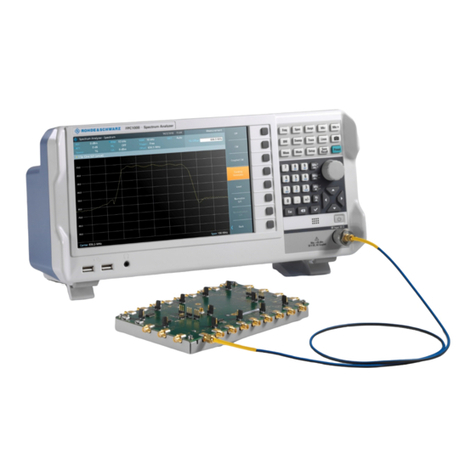
R&S
R&S FPC-Z10 Teaching Kit Getting started
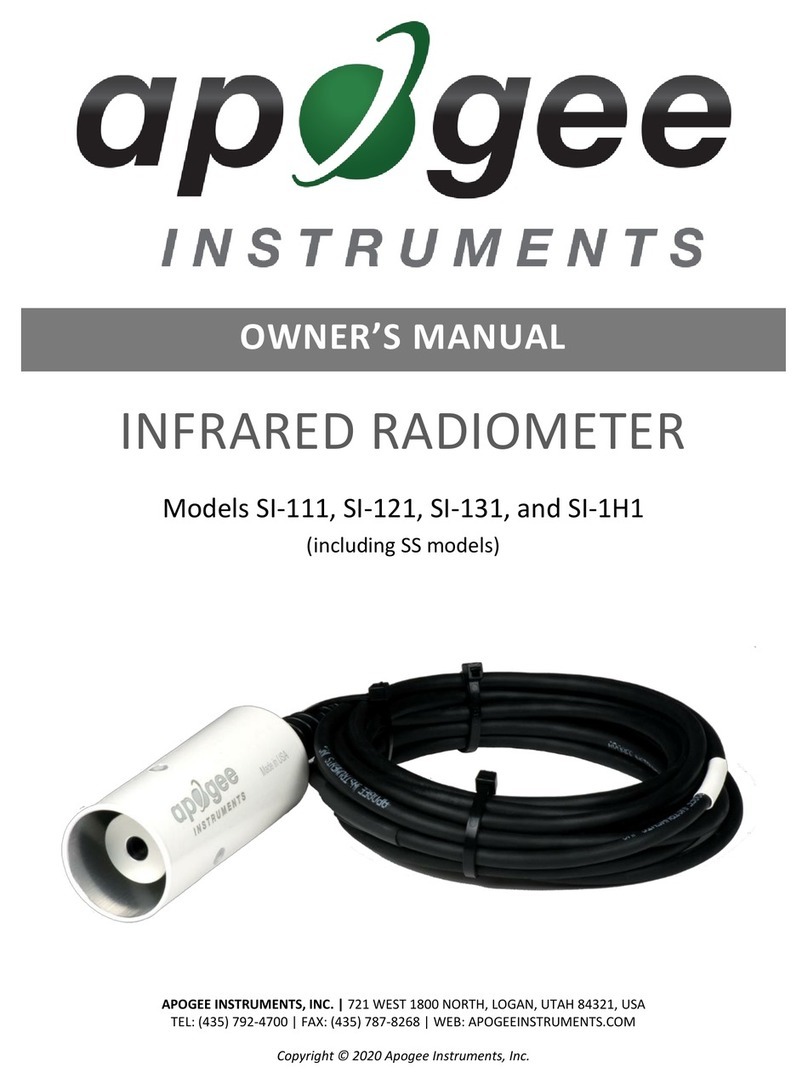
Apogee Instruments
Apogee Instruments SI-121-SS owner's manual

DayTronic
DayTronic TM3 instruction manual
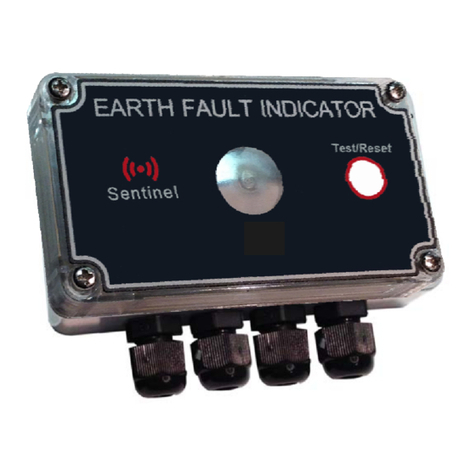
Cybertronix
Cybertronix Sentinel EFI-MFZ-50 user manual
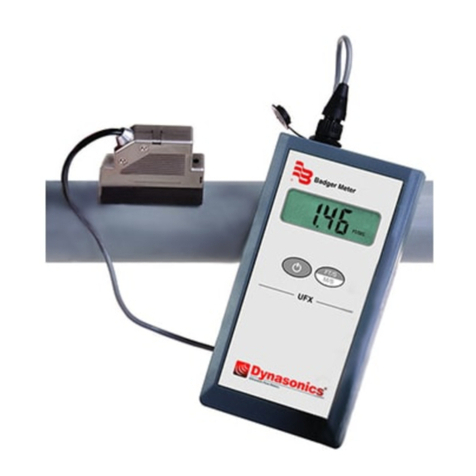
dynasonics
dynasonics UFX operating instructions
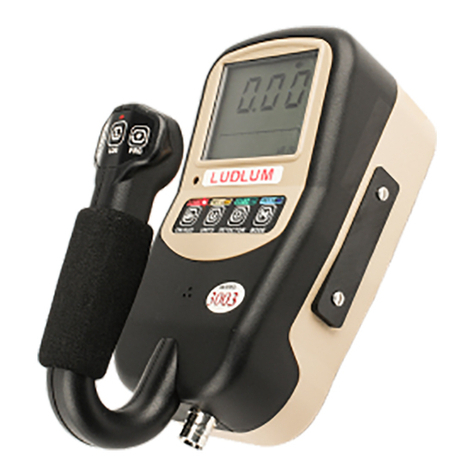
Ludlum Measurements
Ludlum Measurements 3003 user manual

